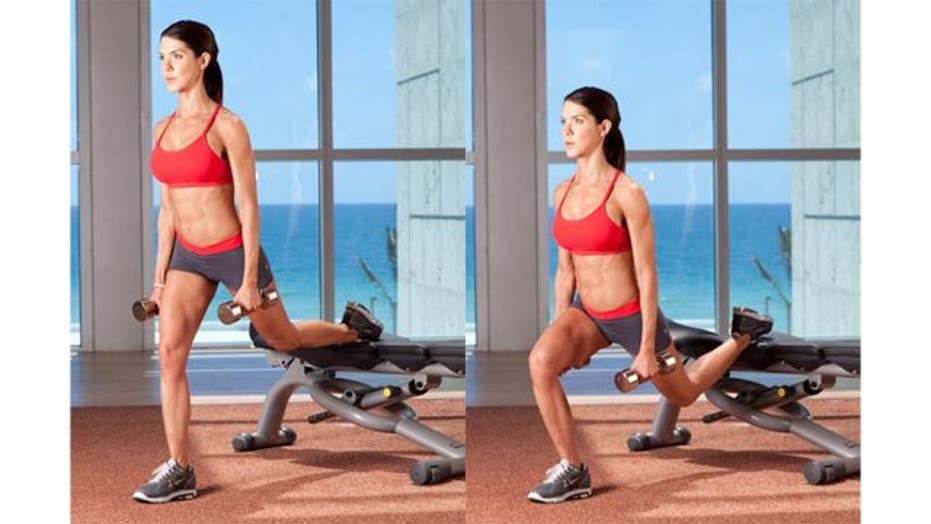Last week, I talked about common women injuries. This week the men get their turn.
It no surprise that active men often battle some kind of nagging aches and pain. With 10 times more testosterone than women, men want to prove they are the next “Rock.” At the gym, I notice some guy trying to level up with the 150 pounds of chest press that the Alpha-male next to him is using, seemingly oblivious to the overstrain he places on his back, neck, and shoulders. But hey, they’re just being manly, right? But there is nothing masculine about injuries.
In my previous article, I pointed out that exercise-related injuries are not necessarily gender specific—that is women gets only this type and men another. However, many injuries tend to be male dominated. Summer time is also a time when guys are prone to problems as the warm weather invites more outdoor activities that involve plenty of throwing, running, swimming, and jumping around.
Here’s a look at two more common male injuries, why they get them, and what men can do to heal and prevent.
1. Shoulder Impingement
What is it? A sharp pain, discomfort or twinge around the rotator cuff in the shoulder. The rotator cuff consists of four muscles: supraspinatus, infraspinatus, teres minor, and subscapularis. These muscles help to elevate and rotate the arm. “The pain itself is caused when the inflamed bursa (bursitis) or tendon (tendinitis) is pinched under the acromion,” says Keith Hechtman, founding partner of UHZ Sports Medicine Institute, board-certified in both orthopedic surgery and sports medicine.
What are the symptoms? You may feel fine at rest or when doing activities below the shoulder level. However, the pain kicks in as soon as the arms extend over your head.
What are the causes? Jill Murphy, DPT, LAT, CSCS, Physical Therapist and owner of MotionWorks Physical Therapy, www.motionworkspt.com, points out that the two main culprits are poor posture over the years–leading to a protracted scapula—and a weakening of the rotator cuff—which may be caused by keeping your arm extended to the point of causing partial or total tears of the rotator cuff. Baseball pitchers, tennis players, avid swimmers, hardcore computer users, and even those who sleep on the same arm every night are at a high risk.
How does it affect gender? Men may have a higher participation in sports that involve throwing motions. Likewise, at the gym they overemphasize the “look-at-me muscles,” such as the pectorals and biceps, which promote muscular unbalances and further weaken the rotator cuff.
How can you prevent it?
Balance your front and back upper body muscles: Pair each exercise that you do for your chest with another one that focuses on the upper back muscles, such as the trapezius, rhomboid, and posterior deltoid.
Add some exercises to strengthen the specific rotator cuff muscles.
Watch your posture when you drive, text, and sit. Maintain a neutral spine and scapula posture. “Picture the opposite of texting posture,” says Murphy.
Perform regular stretching for your back and chest muscles.
2. Hamstring Strains
What is it? A tear in one or more of the three muscles that make up the hamstring muscle group: semitendinosus, semimembranosus, and biceps femoris.
What are the symptoms? They may vary based on the degree of the strain, but usually include a tightness, cramping, and/or burning-type pain in the back of the thigh. It may extend down the leg if the sciatic nerve has also been irritated. This leads to decreased hamstring flexibility, difficulty walking, squatting, getting in and out of a car, and even sitting. Murphy advises seeing your doctor right away if there is a large amount of bruising and swelling associated with this condition.
What are the causes? Almost every activity that implies a forceful knee extension with hip flexion (pulling the knee upward). Think sprinting, jumping over hurdles, weaving to avoid a tackle, sliding into second base.
How does it affect gender? Men are known to be less flexible overall compared with women, but some research has also indicated that women can fight inflammation from muscle overuse better than men. This may explain why men tend to be more susceptible to microtrauma from muscle strains, which can easily transform to a full-blown injury.
Men also tend to fall under the “weekend warrior” category as they age. You know the type: That guy who sits in the office all week long, and then runs at warp speed while pushing a single into a double in his Saturday morning softball league.
How can you prevent it?
Do some static stretches and then foam rolling the muscle to release tension in the fascia.
Strengthen the core and glutes muscles for hip stabilization.
Remember to balance out the number of exercises performed for the quadriceps and the hamstrings.
Add exercises to strengthen the hamstrings, emphasizing the concentric and eccentric motion—shortening the muscle, such as when you do a hamstring curl with a physioball, as you bring the legs toward your buttocks and then slowly extending them without letting the hips fall.

